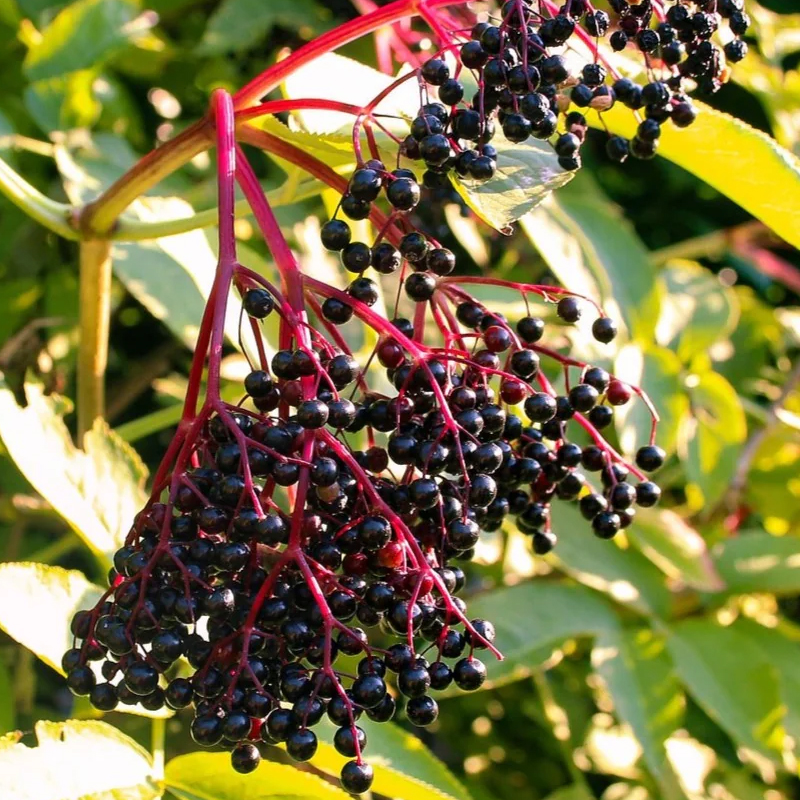You're shopping: DAVIDSONVILLE
(change store)
Fruit Trees and Fruit Shrubs - ELDERBERRY 'SAMDAL' 2G

ELDERBERRY 'SAMDAL' 2G
no reviews for this product. Login to place a review.
Your Price $27.50
Item Number 284242
In store quantity:
0
$27.50/ EA
Elderberry 'Samdal'
2-Gallon
Height: 6-8 feet tall.
Spread: 5-6 feet.
Sunlight: Full sun to partial shade.
Hardiness Zone: 4a.
Other Names: Sambucus nigra 'Samdal'
Description:
A high-yielding European elderberry variety prized for its abundant clusters of dark purple-black berries. 'Samdal' is known for its rich, flavorful fruit, making it an excellent choice for medicinal and culinary uses. It is highly productive, disease-resistant, and best grown with another elderberry variety for optimal fruit set.
Edible Qualities:
Elderberry 'Samdal' produces large clusters of small, dark berries with a tart, earthy flavor. The fruit is not typically eaten raw but is excellent for cooking, preserving, and winemaking.
The fruit is most often used in the following ways:
- Syrups & Extracts
- Jams & Preserves
- Wine & Cordials
- Herbal Remedies
- Tea Infusions
Features & Attributes:
Elderberry 'Samdal' features lush green foliage throughout the growing season, followed by clusters of fragrant white flowers in late spring to early summer that attract pollinators. Its small, dark berries ripen in late summer to early fall, offering an extended harvesting period.
This is a deciduous shrub with an upright, bushy growth habit. It is partially self-pollinating but benefits greatly from being planted near another elderberry variety, such as 'Samyl' or 'York,' for increased yields.
Aside from its primary use as an edible, Elderberry 'Samdal' is suitable for the following landscape applications:
- Wildlife Gardens
- Edible Landscaping
- Naturalized Areas
- Hedgerows
Planting & Growing:
Elderberry 'Samdal' will grow to be about 6-8 feet tall at maturity, with a spread of 5-6 feet. It has a low canopy with a typical clearance of 2-3 feet from the ground. It grows at a fast rate and, under ideal conditions, can be expected to live for 25 years or more.
This shrub thrives in full sun to partial shade and well-drained, moist soil. It requires regular watering, particularly during dry periods, and benefits from an annual layer of mulch to retain soil moisture and regulate temperature. Pruning in late winter or early spring helps maintain its shape and encourages new growth for better fruiting.
Additional Characteristics:
- Late Summer to Early Fall Ripening
- Highly Productive
- Cold Hardy
- Attracts Pollinators
- Best Yields with Cross-Pollination
